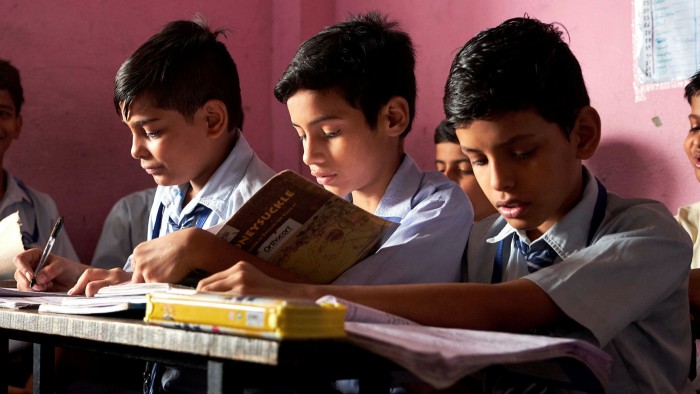Now for the ‘hard part’ of achieving quality education for all

Simply sign up to the Education myFT Digest -- delivered directly to your inbox.
For three-quarters of a century, the world’s leaders have committed and recommitted to the goal of universal education. While great progress has been made, the most difficult part remains to be achieved.
From the 1948 Universal Declaration of Human Rights and the Jomtien World Declaration on Education for All in 1990 to the Dakar Framework for Action in 2000 and the Sustainable Development Goals adopted in 2015, the political pledges on education have been impressive.
Short-term political logic means actions in many countries have focused on the necessary but easy part: spend more, build more schools and hire more teachers. These fit well with the normal ways governments plan, act, spend and measure success. Nearly every nation has the capability to oversee construction, recruit teachers and deliver logistical inputs.
The result has been a massive expansion of education, with more children in school, each spending more years there. Nearly every child in the world now has some access. The hard part is to ensure these children learn enough to finish school equipped with the skills, competencies and capabilities to be successful adults. Global and national leaders have long made commitments to goals for universal quality education. That does require improved school attendance, but coupled with effective teaching and learning.
Just pushing more children through more school is no guarantee of improved learning. A business-as-usual approach will not bring most developing countries anywhere near the minimum objectives of the UN Sustainable Development Goals for literacy and numeracy. Results released in 2019 for seven typical lower-income countries in the Programme for International Student Assessment (Pisa) for Development showed that only 10 per cent of 15-year-olds reached the target for mathematics and 30 per cent for literacy.
The learning crisis will not improve on its own. A study in Indonesia showed that between 2000 and 2014, the proportion of children completing secondary education increased substantially, but the mathematical ability of students in 2014 was worse than in 2000, as so little was learnt in those additional years. Community-based surveys in India, meanwhile, showed that, even after a decade of massive increases in federal spending on basic schooling, fifth-graders’ literacy and numeracy levels had fallen, and a 2017 survey showed young people were radically unprepared for their aspirations.
Similarly, an important recent study from the Center for Global Development, covering 80 countries, found that between the 1960s and 1990s, the likelihood that a woman could read, having completed only primary school, had fallen — in many cases, dramatically.
Furthermore, the failure to learn often comes early, with children not acquiring foundational learning skills in literacy and numeracy in the early grades. The People’s Action for Learning network found that in some lower-income countries, fewer than 20 per cent of children mastered very basic numeracy skills in early grades. Other data on 18 countries show that fewer than half of children in grade six have foundational literacy.

There is an increasing realisation that further progress towards universal quality education can no longer be achieved using the easy ways of the past. Three key steps can set countries on their way.
First is a commitment to achieving mastery of foundational skills in early grades. Vietnam has been able to achieve OECD levels of learning with resources similar to lower-performing countries such as Peru or India. The World Bank’s goal for eliminating “learning poverty” and the early learning part of the UN Sustainable Development Goals offer a way forward.
Second is measurement. The idea that what gets measured gets done is often false — the converse is nearer the truth: what doesn’t get measured doesn’t get done. In the drive for evidence-based policies, if only inputs and enrolment outputs are collected, the evidence will drive systems towards too narrow an array of actions. Creating regular, relevant, reliable information for all actors in education is key to driving purpose-driven change.
Third is to align education systems around learning goals. To achieve learning for all requires all for learning. Aligning instruction with individual students’ current levels of understanding, rather than assumptions based on the levels assumed for a particular age group, has been shown to raise learning levels substantially.
Such reforms are not easy to accomplish. The changes needed in teaching practices require sustained shifts in instruction. Rather than more of the same input-driven systems, these three measures can be important initial steps towards sustained improvements in learning that nearly every education system can adopt, adapt and implement.
Lant Pritchett is RISE (Research on Improving Systems of Education) research director at the Blavatnik School of Government at the University of Oxford

Comments